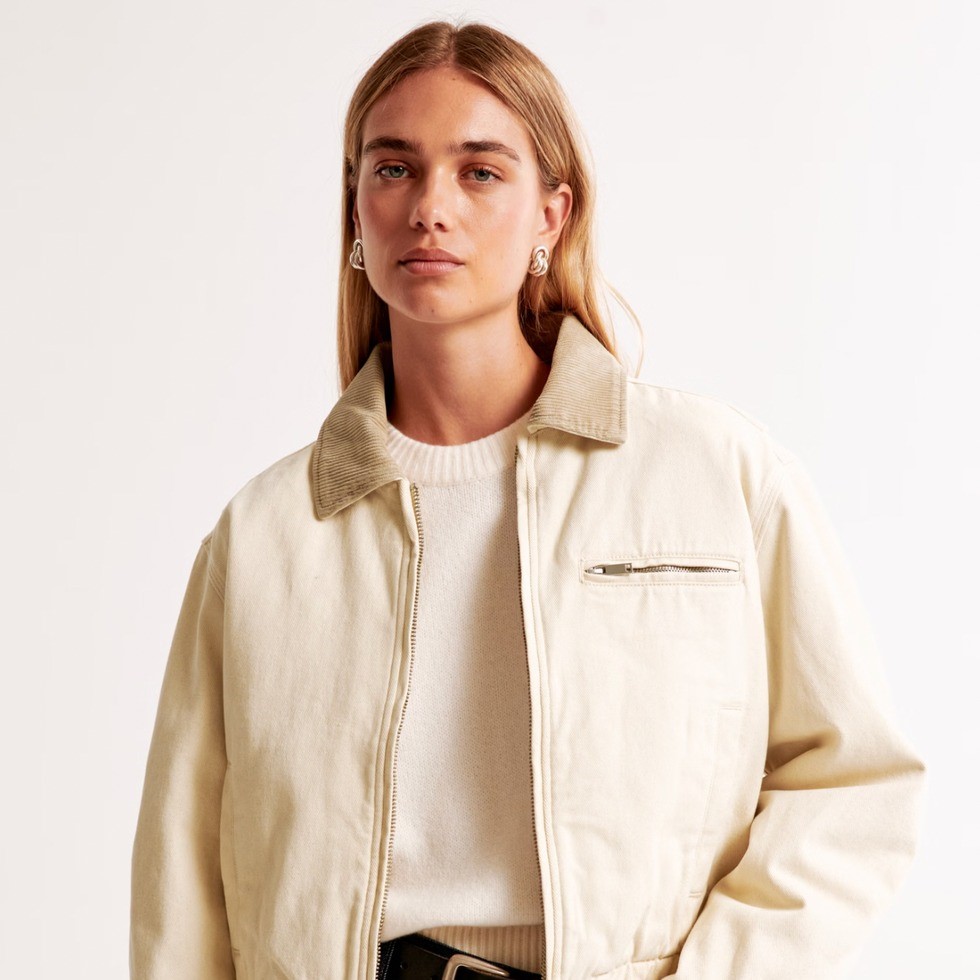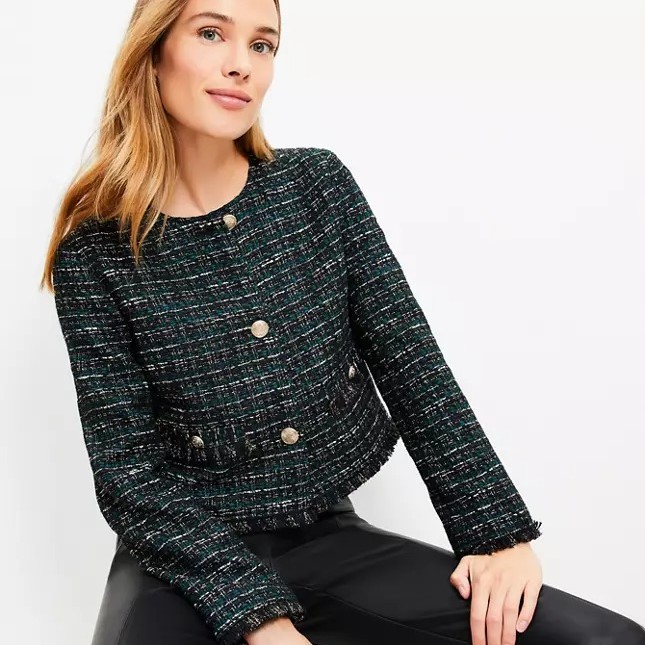The Rise of Sustainable and Eco-Friendly Materials
In the evolving world of fashion, designer outerwear is not immune to the eco-conscious wave sweeping across industries. As we step further into 2024, sustainability has become a cornerstone in the development of designer outerwear. Consumers now demand materials that not only promise durability and comfort but also reflect a commitment to environmental stewardship.
One trend on the rise is the use of recycled fabrics. Brands are repurposing old textiles to create stunning new pieces. This approach not only reduces waste but also offers a narrative of transformation and responsibility. Organic materials, like organic cotton and wool, are also gaining traction. They represent a move away from harmful pesticides and chemicals traditionally used in their production.
Eco-friendly dyes are another innovation coloring the realm of designer outerwear. These dyes are made from natural sources and have a lower environmental impact compared to conventional synthetic dyes. The result is a palette of rich, vibrant hues that consumers can wear with pride, knowing they’re kinder to the planet.
Sustainable practices also extend to production techniques. Energy-efficient manufacturing processes and reduced water usage are increasingly common. Designer brands are also focusing on the ‘slow fashion’ movement. They create high-quality, timeless pieces designed to last, rather than churning out fast-fashion items destined for a brief lifecycle.
The rise of sustainable and eco-friendly materials in designer outerwear reflects a broader shift in society’s values. People are more mindful of their ecological footprint and seek luxury that aligns with their ethical beliefs. For brands, this means a commitment to innovation and responsibility, ensuring their designer outerwear not only looks good but does good for our planet.
Incorporating High-Tech Features in Outerwear Design

In 2024, designer outerwear is embracing technology in innovative ways. High-tech features are not just add-ons but are integrated into the very fabric of these garments. This fusion enhances functionality and elevates the wearing experience.
Smart textiles are a primary feature, where fibers can change color based on temperature or mood. These textiles offer not only a unique aesthetic but also practical applications, like improved thermal regulation. Additionally, the integration of wearable technology such as built-in GPS systems and health monitoring devices is becoming popular. Such features are especially attractive to customers who value both style and utility in their apparel.
Waterproofing and breathability have also seen technological advancements, using nanotechnology to create materials that keep out moisture while allowing skin to breathe. This is particularly pertinent for those living in unpredictable climates.
Moreover, UV protection is another crucial aspect that has been enhanced through technology. Fabrics are now able to offer more effective protection from harmful sun rays, making designer outerwear suitable for various environments.
The seamless blend of style and technology in designer outerwear not only provides enhanced utility but also appeals to the modern consumer’s lifestyle. It reflects a growing trend that aligns with the dynamic needs of contemporary society.
Blending Functionality with High Fashion
The year 2024 sees designer outerwear smashing the barriers between function and fashion. Now, jackets and coats are not just about keeping warm; they’re about making a statement.
Top designers are crafting pieces that offer both high performance and high fashion. Think waterproof yet stylish trench coats or insulated bomber jackets with designer logos. This trend caters to consumers who demand practicality without sacrificing their style.
Key elements include adjustable features such as detachable hoods and convertible lengths. These allow consumers to modify their look based on the occasion. Multi-pocket designs offer not only a chic look but also practicality, keeping essential items within easy reach.
Materials are chosen for both their aesthetic and performance qualities. For example, breathable, stretchable fabrics allow for ease of movement without compromising the sleek silhouette.
In essence, the line between everyday wear and high fashion blurs more each day. Designer outerwear in 2024 successfully combines these realms, pleasing demanding consumers who want it all: comfort, style, and functionality.
The Popularity of Gender-Neutral Designs

As we dissect the prevailing themes in 2024’s designer outerwear, the concept of gender-neutral designs emerges as a standout trend. Fashion is increasingly transcending traditional gender binaries, offering versatile options that appeal to a broad audience. This shift reflects a cultural move towards inclusivity and gender fluidity, resonating with a generation that values individual expression and defies categorization.
The key features of gender-neutral designer outerwear include clean lines, a muted color palette, and an emphasis on functional form over gendered styling cues. Designers are adopting a more universal approach to tailoring, crafting coats and jackets that fit a variety of body types and styles.
Consumers are drawn to these gender-neutral pieces for their adaptability and ease of integration into any wardrobe. They stand as the epitome of modern wearability, prioritizing comfort and simplicity while maintaining a fashionable edge. By investing in gender-neutral outerwear, individuals can choose how to express their identity through fashion on their own terms.
This trend also highlights the growing consumer consciousness around sustainability and ethical production. Gender-neutral garments often have a timeless quality, encouraging a move away from fast fashion and towards more durable, classic pieces that can be worn season after season.
Overall, the rise in gender-neutral designer outerwear mirrors a societal shift towards more flexible and sustainable fashion choices. It encapsulates the spirit of 2024 where functionality, inclusiveness, and fashion-forward thinking converge in the world of luxury apparel.
Collaboration Between High-End Designers and Streetwear Brands
The year 2024 witnesses an exciting trend in designer outerwear: the collaboration between high-end designers and streetwear brands. These partnerships blend luxury with urban appeal, creating unique pieces that resonate with diverse consumer bases.
High-end designers bring precision and innovation to the table. They infuse their rich craftsmanship into each garment. Streetwear brands deliver bold, contemporary aesthetics that echo the voices of modern youth and street culture. This combination ensures that each piece is not only exclusive but also highly relevant in today’s fashion scene.
Key outcomes of these collaborations include:
- Innovative Styles: Combining the meticulous techniques of luxury fashion with the edgy aspects of streetwear results in innovative designs. It makes designer outerwear more appealing to younger audiences.
- Wider Reach: These alliances open up luxury brands to a broader market. Young consumers who admire street culture are now drawn to these upscale products.
- Cultural Relevance: The blend of these two worlds reflects the dynamic nature of cultural trends in fashion. It also allows brands to stay current and desirable.
Such collaborations are particularly popular in major fashion capitals. Here, the mix of high fashion and everyday street style is most pronounced.
Overall, this trend not only diversifies the offerings in designer outerwear but also enriches the fashion industry with fresh ideas and expanded audiences.
Personalization and Customization in Outerwear
The arena of designer outerwear is seeing a surge in personalization and customization. In 2024, consumers seek unique pieces that reflect their personal style, leading to the rise of bespoke outerwear tailored to individual preferences. Key triggers for this trend include the desire for uniqueness, a perfect fit, and a personal connection to the garment.
Brands are responding by offering made-to-measure services, where customers can choose from a variety of fabrics, cuts, and finishes to create a coat or jacket that is truly their own. The appeal of personalized outerwear lies in its ability to cater to the specific style, body shape, and functionality needs of the wearer.
Interactive design tools are becoming commonplace on fashion websites, allowing buyers to visualize and tweak their designs online before placing an order. Here, consumers can pick colors, patterns, and special features like monogramming to make their outerwear distinctive.
Customized details are not just aesthetic; they often enhance the practicality of the garment. Features like adjustable cuffs, pockets, and hoods can be configured to fit personal needs. This trend has caught on particularly well among Millennials and Gen Z, who favor personal expression in their fashion choices.
In summary, personalization and customization in designer outerwear are empowering consumers. They are shaping the industry towards a more client-oriented approach, where individuality takes center stage.
The Return of Vintage and Retro Styles

In 2024, vintage and retro styles are making a significant comeback in designer outerwear. This resurgence is not just about nostalgia; it’s about blending timeless aesthetics with contemporary fashion sensibilities.
Designers are reimagining classic styles from the past. They update them to fit today’s trends and consumer demands. For instance, the classic trench coat is revamped with modern fabrics and cuts, making it both stylish and functional for current lifestyles.
Elements such as bold prints from the 70s, puffy sleeves from the 80s, and minimalist designs from the 90s are prominent. These styles are receiving a modern twist that aligns with 2024’s fashion-forward thinking.
This trend provides consumers with a wide range of unique stylistic choices. The blend of eras offers a versatile wardrobe full of character and distinction. It appeals to a broad demographic, from young fashion enthusiasts to more mature consumers looking for a hint of retro charm in their attire.
Moreover, by reintegrating vintage designs, brands are able to reduce their environmental impact. They repurpose and reinterpret existing designs rather than constantly creating new ones.
Ultimately, the return of vintage and retro styles in designer outerwear highlights a cyclical appreciation of fashion. It confirms that past trends always find a way to return, refreshed and ready for the modern-day market.
Influences of Global Fashion on Outerwear Trends
The year 2024 is a melting pot of global fashion influences that are shaping designer outerwear. Designers are now drawing inspiration from a myriad of cultural styles and aesthetics, creating garments that embody global diversity.
Cultural elements from around the world have found their way into the cuts, patterns, and fabrics of outerwear. Traditional patterns from Africa, Asian-inspired silhouettes, and vibrant colors from South American textiles are being woven into the designs. This global infusion not only enriches the range of available outerwear but also reflects the interconnected world we live in.
Travel and the digital age have brought diverse fashion cultures to wider audiences. Popularity surges as people see international celebrities and influencers wearing these global styles. As a result, designer outerwear is now a tapestry of world fashion, appealing to those who seek cosmopolitan flair.
Brands are also tapping into global issues and narratives. They’re designing pieces that make statements about cultural heritage and social movements. In doing so, outerwear becomes more than just a fashion choice; it’s a voice in the global conversation.
The reach of global fashion includes embracing traditional techniques and crafts. This nod to artisanal skills not only honors cultural history but also offers a counterpoint to mass production, resonating with consumers seeking authenticity.
In sum, the influence of global fashion is a testament to the eclectic and ever-evolving nature of designer outerwear. With each stitch, we see a picture of a world that celebrates both the unique and the united.


